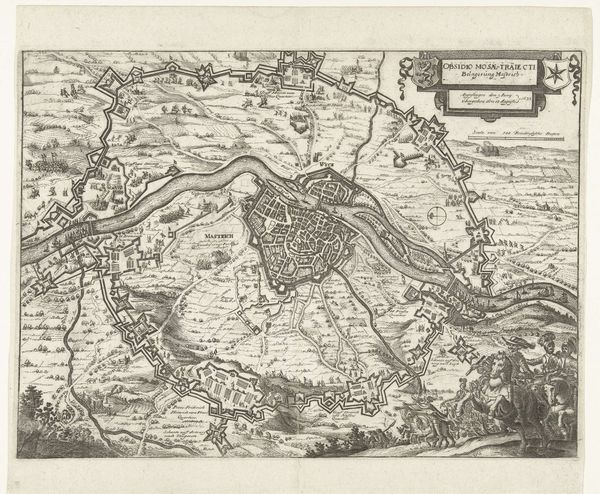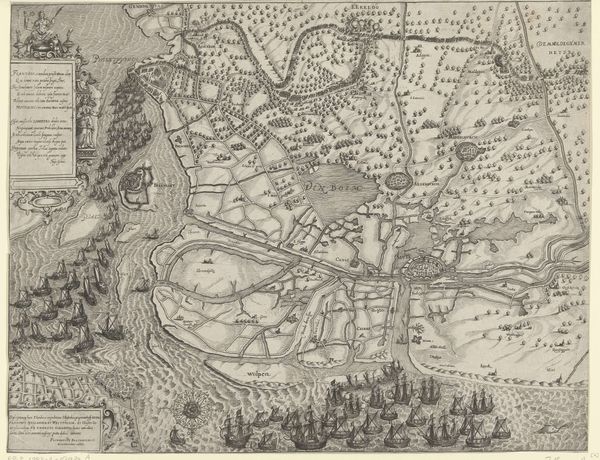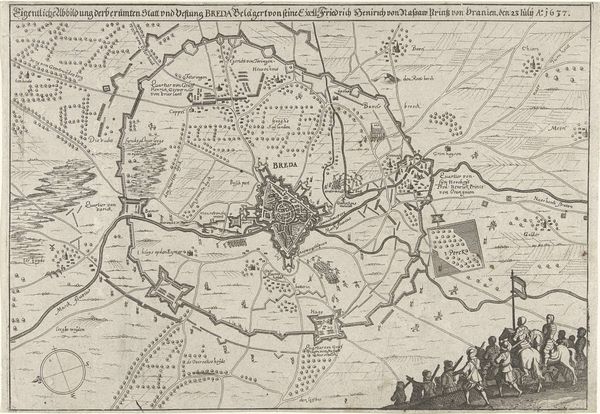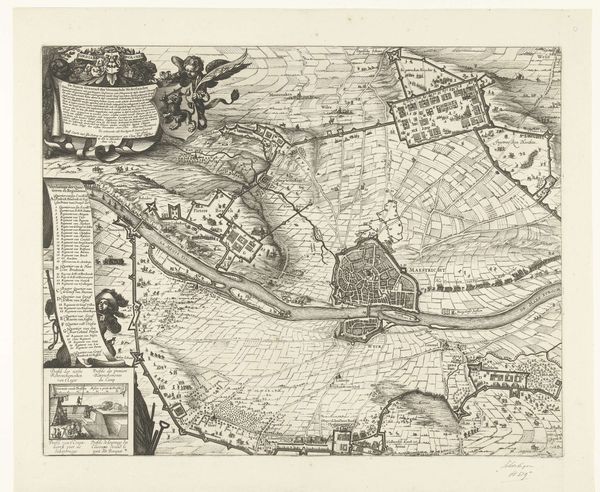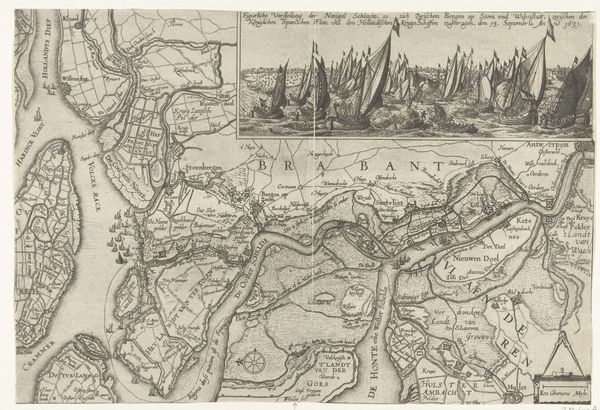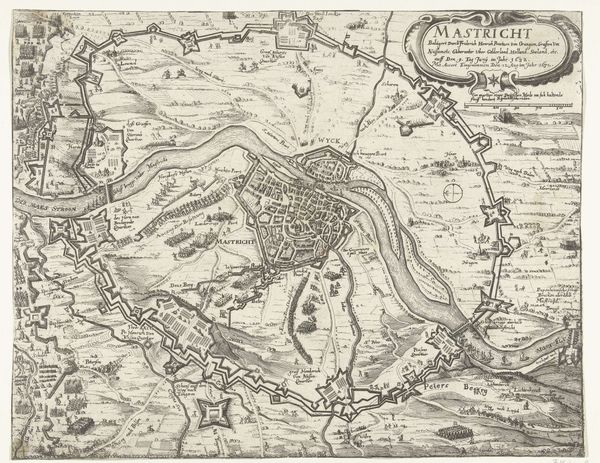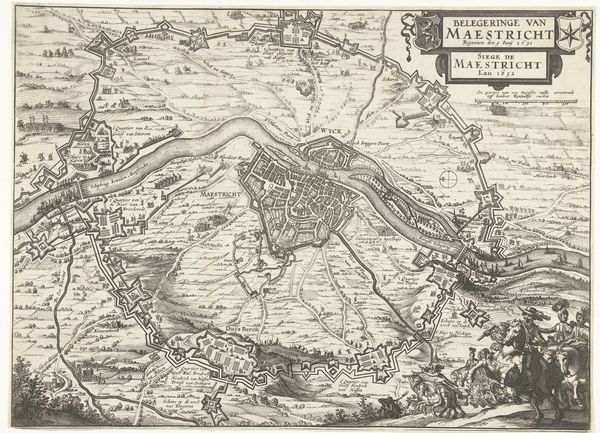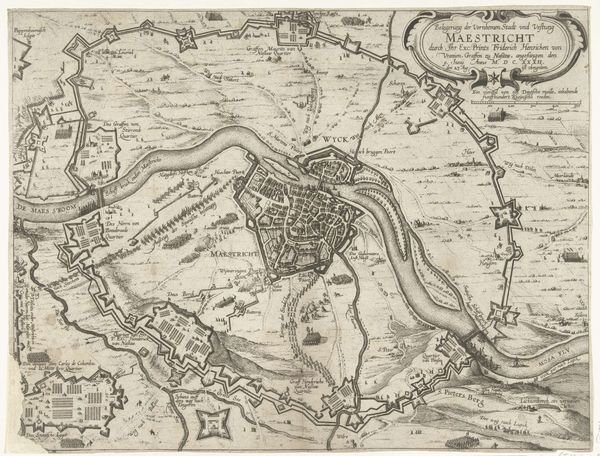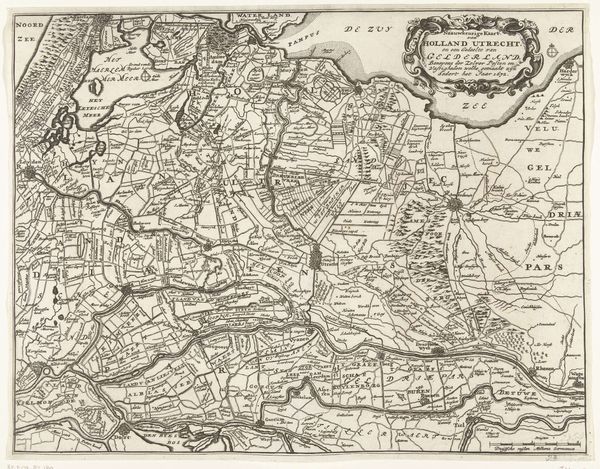
print, engraving
#
dutch-golden-age
# print
#
landscape
#
cityscape
#
history-painting
#
engraving
Dimensions: height 272 mm, width 355 mm
Copyright: Rijks Museum: Open Domain
Editor: This print, "Belegering van Maastricht, 1632," was made sometime between 1651 and 1652, likely by an anonymous Dutch Golden Age artist. It's an engraving, depicting the siege as a cityscape. It seems incredibly detailed and complex. How do you interpret the work's composition and the way the information is presented? Curator: Indeed. The composition of this print employs a rigorous geometric structure. Note the network of lines delineating the fortifications, resembling a meticulously rendered spiderweb. This is not merely topographical; it’s a representation of power, meticulously planned and aggressively executed. Do you observe the stark contrast between the organic landscape and the geometric forms imposed upon it? Editor: I do. The city walls and surrounding forts appear very rigid against the curving rivers and fields. Is that contrast intentional? Curator: Absolutely. The artist creates a tension through these opposing forms. The structural rendering of the forts and barricades highlights the intellectual, calculated nature of siege warfare against the fluidity and unpredictability of nature and the "fate" of those inside the city. It signifies control over chaos, order imposed upon the organic. Consider, also, how the lines create a sense of depth despite the flatness of the print. This meticulous construction reveals an effort to not only document but also to communicate a particular ideology concerning war and territory. The use of line is not merely representational; it is conceptual. Editor: That’s a fascinating reading. I hadn't thought of the lines as representing a conceptual framework as much as just illustrating a physical space. I can see the ideology embedded in the geometric patterns now. Curator: The formal elements of this print work in service to meaning. Through the rigorous application of geometric forms, the artist is not merely documenting the event; they are also making a powerful statement about control, order, and the imposition of human will upon the natural world.
Comments
No comments
Be the first to comment and join the conversation on the ultimate creative platform.
